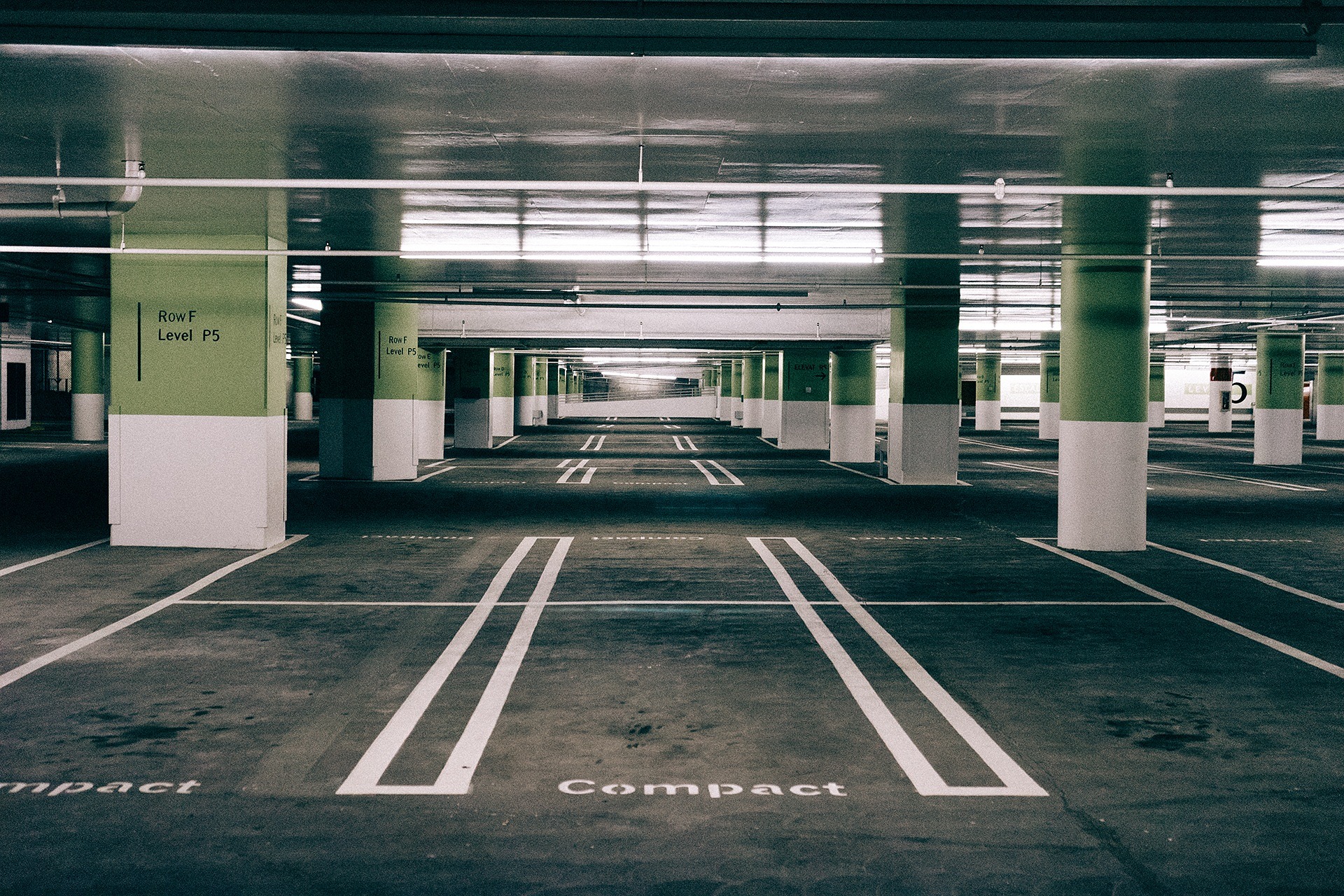Everything You Need to Know About Smart Parking Sensors
.jpg)
Finding a parking space should not feel like an obstacle course. Yet every day, millions of drivers waste time, energy, and peace of mind circling around. What if this experience could become simple, fast, and efficient? By optimizing the use of available spaces, technology provides a concrete answer: making parking more fluid, reducing traffic jams, and lowering environmental impact. The solution lies in one word: the smart parking sensor.
These devices, real sentinels of our parking areas, are the cornerstone of the smart parking revolution. But how do they actually work? What technologies power this promise of efficiency, and above all, how do you choose the most suitable solution for an underground car park, a downtown street, or a large corporate campus? Let’s dive into this technology to understand how it is redefining mobility management.
What is a smart parking sensor and how does it work?
A smart parking sensor is an electronic device designed to detect in real time whether or not a vehicle is occupying a parking space. Its main role is to collect this occupancy data and transmit it to a central system. Once aggregated and processed, this data becomes the foundation of many smart mobility services: guiding drivers to available spaces, optimizing turnover, analyzing usage for operators, and much more.
The functioning relies on two pillars: detection and communication. Detection is achieved through different technologies, each with its own specificities. Some sensors use magnetic fields to detect the metallic mass of a car, others use miniature radars, and the most recent rely on AI-powered image analysis. Once the status of the space is determined (free or occupied), the information is transmitted, usually wirelessly, via low-power networks such as LoRaWAN or NB-IoT, to a gateway. This gateway centralizes data from multiple sensors and relays it to a cloud-based software platform. That is where the real value is created: raw data is transformed into actionable insights, displayed on dynamic signage, mobile apps, or management dashboards.
The different detection technologies for optimized parking management
Choosing the right detection technology is crucial and strongly depends on the type of parking, the budget, and the objectives. There is no single solution but rather a range of options to assess according to criteria such as accuracy, cost, maintenance, and scalability.
Ground sensors: the traditional solution
For a long time considered the standard, individual parking sensors are placed directly on each space. They mainly rely on magnetometer technology (detecting metallic mass), often combined with micro-radar to improve detection. Two types exist:
Embedded sensors: installed within the pavement, they are protected from vehicles and cleaning machines, but their installation requires civil engineering work.
Surface-mounted sensors: faster to install, they are simply fixed onto the ground. However, they are more exposed to shocks and vandalism and may hinder two-wheelers or pedestrians.
- Embedded sensors: installed within the pavement, they are protected from vehicles and cleaning machines, but their installation requires civil engineering work.
- Surface-mounted sensors: faster to install, they are simply fixed onto the ground. However, they are more exposed to shocks and vandalism and may hinder two-wheelers or pedestrians.
While accurate for individual spaces, their one-sensor-per-space model has limitations. Purchase and installation costs can quickly become high for large car parks. In addition, maintenance, especially battery replacement (even though autonomy can reach up to 10 years under ideal conditions), and poor scalability have pushed many major manufacturers to move away from this aging technology.
A technology losing ground
Although still offered by some suppliers, ground sensors are increasingly being abandoned in favor of more scalable solutions. Challenges linked to large-scale installation, maintenance in vast car parks, and total cost of ownership explain why major players like Bosch and Nedap have stopped producing them. It is essential to consider the long-term viability of this technology before investing.
Smart cameras: image analysis for parking
The most significant evolution in this field comes from artificial intelligence applied to image analysis. A single strategically placed camera can monitor dozens, even hundreds of parking spaces.
- Space-by-space cameras: Installed high up (on poles, building facades, or under solar canopies), these cameras analyze images in real time to identify free and occupied spaces. Deep learning algorithms achieve accuracy rates above 99 percent. Their main advantage is scalability: one installation covers a large area, drastically reducing infrastructure and maintenance compared to ground sensors.
- Ceiling-mounted cameras for covered car parks: Specifically designed for underground or multistory car parks, these cameras are fixed to the ceiling or cable trays. One device can monitor up to six spaces and often integrates a light indicator (green/red) for immediate visual guidance.
Is privacy (GDPR) a barrier?
This is a legitimate concern, but modern solutions address it effectively. Image analysis is often carried out locally (edge computing), directly within the camera. Only anonymized data, such as “space A8 occupied,” is transmitted. Images are neither stored nor sent to a central server, ensuring full GDPR compliance.
Radar and LiDAR technologies: precision and robustness
Radar uses radio waves and LiDAR uses laser pulses to map the environment and detect vehicles. These technologies offer exceptional accuracy and reliability, even in harsh weather conditions such as rain, fog, or snow, where traditional cameras can struggle.
However, their purchase and installation costs remain high, limiting them to critical applications or complex environments where absolute precision is essential. One LiDAR sensor can monitor between 10 and 50 spaces, but its deployment requires specific expertise and higher energy consumption.
Counting through flow analysis (entries and exits)
For gated car parks, another approach is to count vehicles entering and leaving rather than monitoring each space individually. Automatic License Plate Recognition (ALPR) cameras or flow sensors are installed at access points. The system keeps a real-time count of available spaces.
This method is reliable and cost-effective for knowing the overall occupancy rate of a car park. Its main drawback is that it cannot guide drivers to a specific free space. Moreover, the system can become unsynchronized (for instance, if a barrier remains open) and requires periodic manual or automatic recalibration to ensure accuracy.
The tangible benefits of a parking space detection system
Implementing a smart parking solution based on sensors generates measurable benefits for all stakeholders, from drivers to parking operators.
For drivers:
- Reduced search time: The main benefit is a drastic reduction in time spent looking for a spot, a major source of stress and frustration.
- Traffic flow improvement: Fewer cars searching means less congestion inside and around car parks.
- Enhanced user experience: Clear and reliable guidance via signage or mobile apps makes the journey smoother and more efficient.
For parking operators (businesses, cities, shopping centers):
- Optimized occupancy: Better visibility of actual usage increases turnover and effective capacity, sometimes by up to 47 percent.
- Data-driven decisions: Usage reports such as occupancy rates by hour or average parking duration are invaluable for adjusting pricing policies, planning works, or reallocating spaces.
- Increased revenue: Improved turnover and better enforcement of rules, such as EV charging or drop-off zones, can generate extra income.
- Environmental impact reduction: Less time spent searching directly lowers CO₂ emissions, a strong argument in CSR strategies.
- Automated enforcement: Data can be transmitted to enforcement officers to more effectively target violations such as overstaying or illegal use of reserved spaces.
How to choose the right sensor technology for your needs
Given the variety of technologies, the choice must be guided by a pragmatic analysis of your specific needs. Key criteria include:
Type of parking:
- Underground or multistory car parks: Ceiling-mounted cameras with light indicators are ideal. Entry-exit counting is an economical alternative if space-by-space guidance is not a priority.
- Outdoor car parks: AI-powered pole-mounted cameras are the most scalable and modern solution. Ground sensors remain an option for specific or small areas.
- On-street parking: AI cameras are increasingly deployed due to their ability to cover long stretches of road, making cost per space very competitive.
- Specific zones (disabled, EV, delivery): Here, accuracy is essential. A dedicated camera or ground sensor ensures rules are properly enforced
Accuracy and reliability: What level of precision do you require? For simple occupancy information, 95 percent may suffice. For managing reserved spaces or triggering payments, 99 percent is indispensable.
Costs (installation and maintenance): Evaluate total cost of ownership, not just purchase cost. A solution cheap to buy but expensive to install and maintain may end up costing more long term.
Scalability and integration: Will your project expand? The chosen solution must be adaptable. More importantly, it should integrate with your existing systems, such as access control, VMS, or mobile apps. Solutions based on open APIs ensure future-proof flexibility.
Expert advice
Do not focus only on the sensor. The sensor is just the first building block. The real intelligence lies in the software platform that collects, analyzes, and enhances the data. An agnostic platform, capable of interfacing with different types of sensors and equipment, such as barriers, charging stations, or LPR cameras, will offer maximum flexibility and scalability to build a coherent mobility ecosystem.
Beyond the sensor: the importance of a centralized management system
A car park full of sensors is not a smart car park. It is merely a “connected” one. Intelligence emerges when the data from these sensors is centralized, cross-referenced, and exploited by a parking operating system. That is where real transformation occurs.
Imagine a software platform acting as the brain of the system, receiving information from all your sensors regardless of their technology. This platform does more than show “free” or “occupied.” It orchestrates the entire ecosystem:
- It centralizes and ensures the integrity of data from heterogeneous sensors.
- It integrates with your existing access control equipment, whether barriers, badge readers, or LPR cameras, so you do not need to replace everything.
- It provides tailored interfaces for each type of user: an analytical dashboard for the manager and a mobile app for drivers who can check availability in real time or even reserve a space.
- It applies complex management rules, such as prioritizing certain groups, managing quotas, or dynamically adapting rights according to occupancy.
Case study: reinventing the corporate campus
Take the example of a multi-tenant office building. Previously, the car park was a source of conflict. Today, equipped with ground sensors and LPR cameras at entrances, everything has changed. All equipment is managed by a centralized software platform such as Izix.
In the morning, an employee checks their app, sees that 15 spaces are available, and reserves one. Upon arrival, the LPR camera recognizes their license plate, and the barrier opens automatically. The app guides them to a free space detected by a sensor. Meanwhile, the building manager views on their dashboard that occupancy is at 85 percent and peak demand occurs between 8:30 and 9:15 am. This allows them to adjust allocation rules for afternoon visitors.
The hardware detects, but it is the software that orchestrates, streamlines, and optimizes.
Conclusion
In summary, optimizing parking management with smart sensors represents an economic lever, an environmental asset, and a major technological advance for the cities of tomorrow. Operators and managers who adopt these solutions will benefit from better visibility of traffic flows, reduced costs, and enhanced ability to meet the demands of modern and sustainable mobility.
Frequently Asked Questions about Smart Parking Sensors
Still have questions?
Upgrade to Smart Parking Today
Learn how smart sensors and a centralized platform can streamline your parking operations and enhance user experience.
Request a Demo
.png)

